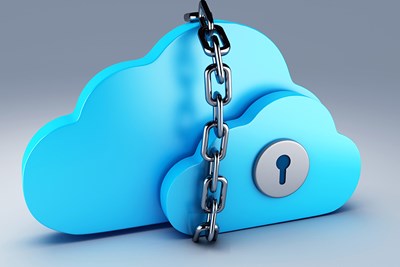The ability to access and control our devices remotely has become a necessity rather than a luxury. Whether you are a business professional, a tech-savvy individual, or someone who simply wants the freedom to manage their devices on the go, secure remote access software can be a game-changer.
This article explores the ins and outs of remote access software, its advantages, security considerations, and how you can harness its power to unlock unparalleled convenience and productivity.
The Importance of Remote Access Software
Advantages of 24/7 Access to Devices
Remote access software empowers users with the ability to connect and control their devices from virtually anywhere with an internet connection. This means that you can access your work computer from home, manage your home desktop while traveling, or even troubleshoot technical issues on your mobile devices. The freedom of 24/7 access ensures that you never miss a crucial task and stay connected at all times.
Understanding Secure Remote Access Software
How It Works
Secure remote access software works on the principle of establishing a secure connection between the user's device and the remote device. This is achieved through encryption protocols that safeguard data transmission from potential eavesdropping or unauthorized access. The software acts as an intermediary, facilitating seamless communication between the two devices.
Ensuring Data Security
One of the primary concerns with remote access is data security. However, modern remote access solutions employ advanced security measures, including multi-factor authentication and end-to-end encryption, to ensure that only authorized users can access the remote device. Additionally, user activity logs and session limits add an extra layer of protection against potential security breaches.
Benefits of Secure Remote Access Software
Flexibility and Convenience
Secure remote access software liberates users from the confines of physical locations. Whether you're on a business trip, vacation, or simply away from your office desk, you can access critical files, applications, and resources with ease. This flexibility enhances productivity and enables you to strike a healthy work-life balance.
Increased Productivity
With the ability to control your devices remotely, time and geographical constraints no longer hinder productivity. You can collaborate with colleagues, complete urgent tasks, and attend virtual meetings from anywhere, eliminating unnecessary delays and optimizing your work hours efficiently.
Cost Savings
Remote access software reduces the need for physical presence, leading to cost savings in terms of travel expenses and infrastructure maintenance. For businesses, this can result in reduced operational costs and increased efficiency in managing geographically dispersed teams.
Choosing the Right Remote Access Solution
Factors to Consider
Selecting the appropriate remote access solution requires careful evaluation of various factors. Consider aspects like security features, user-friendliness, compatibility with your devices, scalability, and customer support before making a decision.
Top Features to Look for
Look for essential features like file transfer capabilities, screen-sharing functionality, session recording options, and mobile device support when choosing a remote access software. These features enhance the overall user experience and productivity.
How to Set Up Secure Remote Access
Step-by-Step Guide
Setting up secure remote access software may seem daunting, but with the right guidance, it becomes a straightforward process. Follow these step-by-step instructions to get started and enjoy uninterrupted access to your devices:
Step 1: Research and Choose a Reliable Remote Access Software
Start by researching and comparing different remote access software available in the market. Look for reputable and well-established providers that offer secure and reliable solutions. Read user reviews and consider the features they offer to find a software that suits your specific needs.
Step 2: Download and Install the Remote Access Software
Once you have selected a remote access software that fits your requirements, proceed to download the software from the official website of the provider. Most remote access solutions offer installation files for various operating systems like Windows, macOS, Android, and iOS. Choose the appropriate file for your device and run the installer.
Step 3: Create an Account and Set Up Credentials
During the installation process, you will be prompted to create an account with the remote access software provider. This account will serve as your access credentials and allow you to log in to the software from different devices. Make sure to choose a strong and unique password for added security.
Step 4: Install the Software on the Target Device
After setting up your account, install the same remote access software on the device you want to access remotely. This could be your office computer, home desktop, or any other device you wish to control. Follow the same installation process as you did on your primary device.
Step 5: Establish a Connection between Devices
Once both devices have the remote access software installed, open the application on both devices. You will be required to log in using the credentials you created earlier. After logging in, the software will display a list of available devices to connect to. Choose the device you want to access remotely and initiate the connection.
Step 6: Verify and Authorize the Connection
The target device will receive a connection request from your primary device. For security purposes, most remote access software requires verification and authorization before the connection is established. You may receive a prompt on the target device to accept the connection request. Verify the connection request and authorize the access.
Step 7: Start Controlling the Remote Device
Once the connection is established and authorized, you can now control the remote device from your primary device. The remote access software usually provides a user-friendly interface that mimics the remote device's desktop. You can use your mouse and keyboard as if you were physically present in front of the remote device.
Step 8: Transfer Files and Data (Optional)
Many remote access software also offer file transfer functionality. If you need to transfer files or data between the two devices, explore the file transfer options provided by the software. This feature can be particularly useful for accessing and managing files on the remote device.
Step 9: End the Remote Access Session
When you have completed the tasks on the remote device, make sure to end the remote access session properly. Some software allows you to close the session directly from the interface, while others may require you to log out of the remote device. Properly ending the session ensures the security of both devices and prevents unauthorized access.
Step 10: Securely Log Out and Disconnect
Finally, securely log out of the remote access software on your primary device and close the application. It's essential to disconnect and log out properly to prevent any potential security risks or unauthorized access to your devices.
Troubleshooting Tips
While remote access software is designed to work seamlessly, occasional technical issues may arise. Learn about common troubleshooting tips and how to resolve them swiftly to avoid disruptions in your remote access experience:
- Check Internet Connection: The most common issue with remote access software is a poor or unstable internet connection. Ensure that both your primary and remote devices have a stable internet connection. If you experience connection drops or lag, consider using a wired connection or moving closer to the Wi-Fi router.
- Update Software: Keep both the remote access software and the operating system of your devices up to date. Software updates often include bug fixes, security patches, and performance improvements that can resolve connectivity or compatibility issues.
- Verify Firewall and Antivirus Settings: Firewalls and antivirus software may sometimes block remote access connections. Check the settings on both devices to ensure that the remote access software is allowed to establish connections. Whitelist the remote access software if necessary.
- Check Port Forwarding (for Network Restrictions): If you are accessing a device behind a router or firewall with strict network restrictions, you may need to configure port forwarding. Consult the remote access software's documentation or the router's manual for specific instructions on port forwarding.
- Restart Devices: Sometimes, a simple restart of both your primary and remote devices can resolve connectivity issues. Restarting can clear temporary glitches and refresh network connections.
- Use Quality Hardware: For a smoother remote access experience, use quality hardware that can handle the demands of remote access software. A high-performance computer with sufficient RAM and processing power can improve responsiveness.
- Check for Software Conflicts: Some software running on the remote device may conflict with the remote access software, causing issues. Try closing unnecessary applications or running the remote access software in a clean boot mode to identify potential conflicts.
- Disable Graphics Hardware Acceleration: If you experience lag or screen display issues during remote access, try disabling graphics hardware acceleration in the remote access software settings. This can improve performance on some devices.
- Inspect Logs and Error Messages: Remote access software often generates logs and error messages when issues occur. Check these logs for any error codes or messages that might help identify the problem.
- Reinstall Remote Access Software: If all else fails, consider uninstalling and reinstalling the remote access software on both your primary and remote devices. This can resolve any corrupted installation files that might be causing problems.
- Contact Customer Support: If you encounter persistent issues that you can't resolve, reach out to the customer support of the remote access software provider. They can provide specific guidance and solutions tailored to your situation.
Real-World Applications of Remote Access Software
Business Use Cases
For businesses, remote access software opens doors to new possibilities. It enables remote IT support, access to office networks, and secure file sharing among team members. Embracing remote work becomes effortless with the right remote access solution.
Personal Use Cases
On a personal level, remote access software allows users to manage home computers, access media libraries, and even control smart home devices remotely. The convenience and control it offers enrich everyday life.
Potential Risks and Mitigation Strategies
Protecting Against Cyber Threats
While remote access software offers immense benefits, it also introduces potential security risks. Familiarize yourself with common cyber threats and learn how to safeguard against them to ensure a secure remote access experience.
Best Practices for Safe Usage
Implementing best practices enhances the security and effectiveness of remote access software. From using strong passwords to keeping software up-to-date, these practices play a vital role in mitigating risks and maintaining a safe environment.
The Takeaway
Secure remote access software has revolutionized the way we interact with our devices. The ability to control and manage devices remotely provides unprecedented convenience, flexibility, and productivity. Embracing this technology allows businesses to thrive and individuals to lead more balanced and efficient lives. So, whether you're a business professional or a tech enthusiast, exploring the world of remote access software can unlock a new realm of possibilities.



